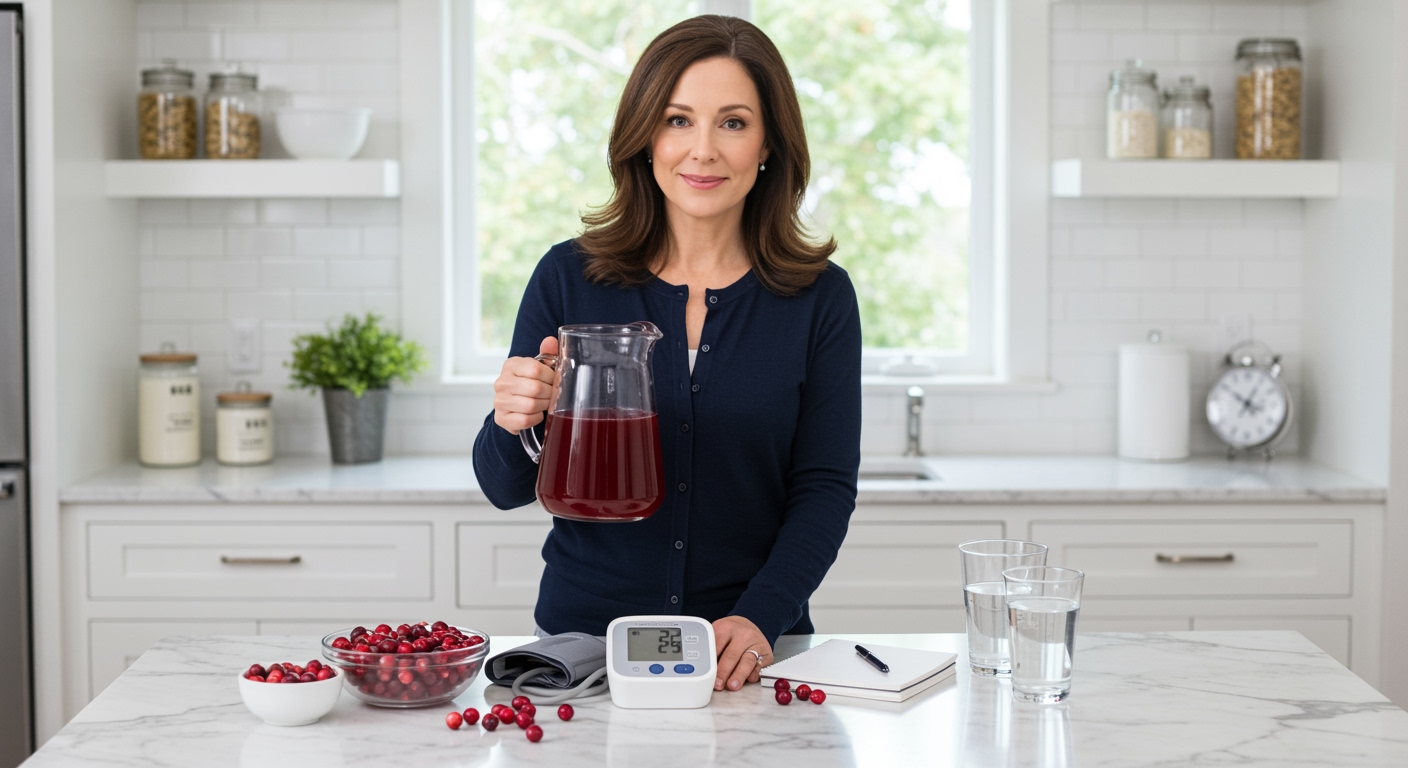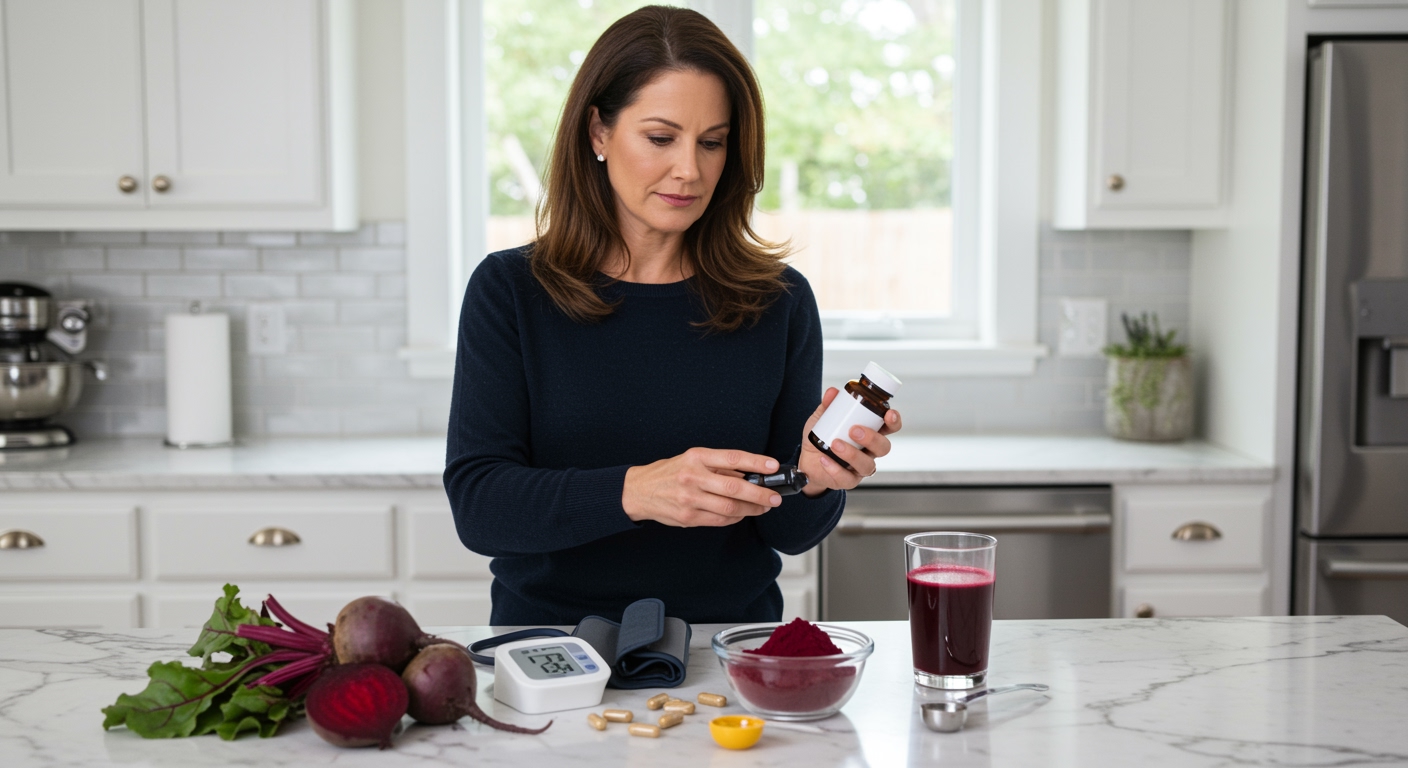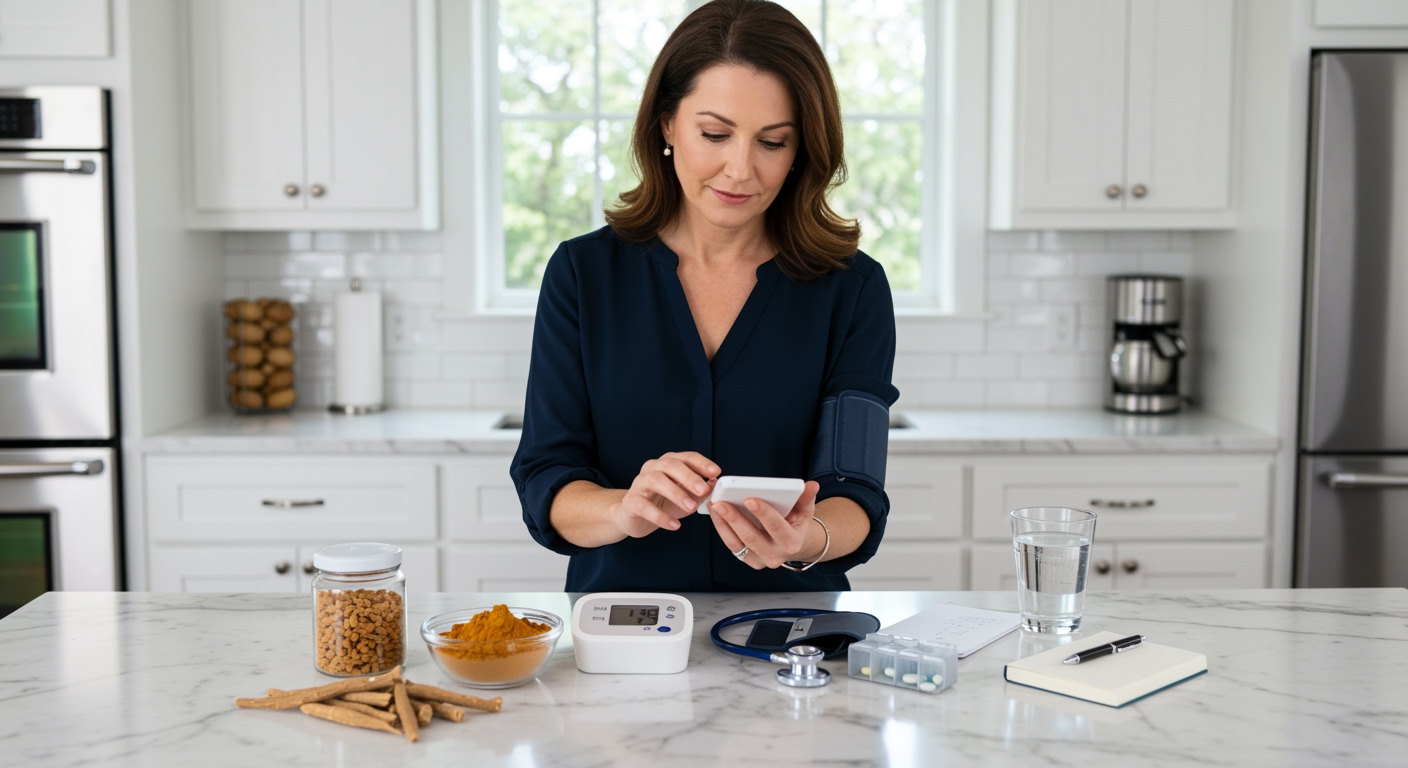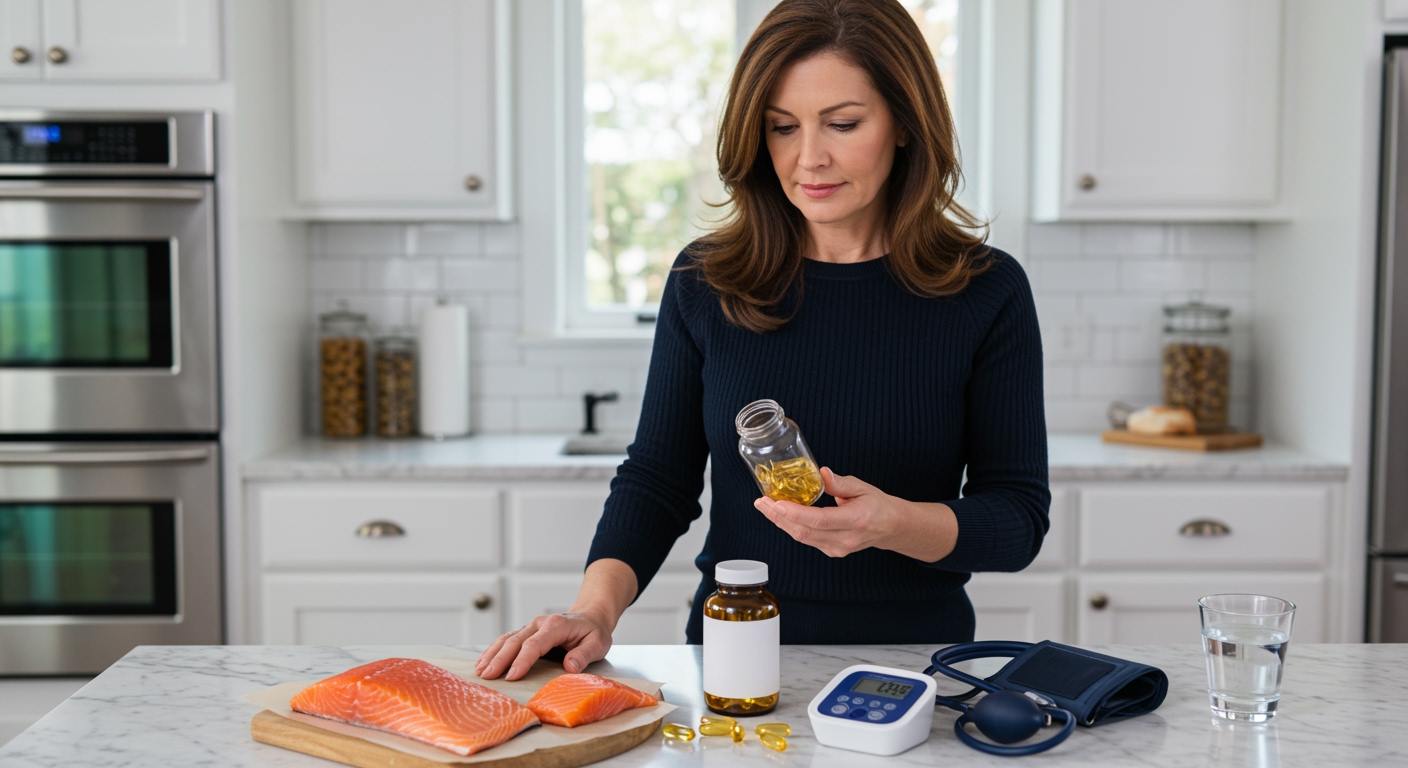✪ Key Takeaway: Cranberry juice may help lower blood pressure through antioxidants, but effects are modest and require consistent daily consumption.
Introduction
You grab a bottle of cranberry juice from the store shelf, wondering if this tart red drink could actually help control your blood pressure naturally.
Many people ask this question because they want natural alternatives to blood pressure medications or simple ways to support their cardiovascular health through diet.
Hi, I’m Abdur, your nutrition coach and today I’m going to explain exactly how cranberry juice affects blood pressure, what the research shows, and whether it deserves a place in your daily routine.
What Does Science Say About Cranberry Juice and Blood Pressure?
Recent research shows that cranberry juice can produce modest reductions in blood pressure when consumed regularly over several weeks.
A comprehensive analysis of multiple studies found that people who drank cranberry juice daily experienced average decreases of 1.52 mmHg in systolic pressure and 1.78 mmHg in diastolic pressure.
These numbers might seem small, but they represent meaningful improvements when sustained over time.
The antioxidant compounds in cranberries, particularly anthocyanins and proanthocyanidins, appear to be the key players in this blood pressure lowering effect.
These compounds help improve the function of your blood vessel walls, making them more flexible and responsive to changes in blood flow.
Most studies used doses ranging from 240 to 500 milliliters of cranberry juice daily, which equals about 8 to 17 fluid ounces.
The effects typically became noticeable after 4 to 8 weeks of consistent consumption, suggesting that patience and regularity are essential for seeing benefits.
✪ Fact: Cranberry juice contains more antioxidants per serving than most other fruit juices, including grape and apple juice.
How Does Cranberry Juice Actually Lower Blood Pressure?
The blood pressure lowering effects of cranberry juice work through several interconnected mechanisms in your cardiovascular system.
Nitric oxide production increases when you consume cranberry antioxidants regularly, and this molecule helps your blood vessels relax and widen.
When blood vessels are more relaxed, your heart doesn’t have to work as hard to pump blood throughout your body, resulting in lower pressure readings.
Cranberry compounds also help reduce inflammation in your arterial walls, which is a major contributor to high blood pressure over time.
Chronic inflammation makes blood vessels stiffer and less responsive, but the anti-inflammatory properties of cranberries help counteract this process.
Another important mechanism involves endothelial function, which refers to how well the inner lining of your blood vessels works.
Healthy endothelial function is crucial for maintaining normal blood pressure, and cranberry antioxidants help protect and improve this delicate system through their protective effects against oxidative stress.
✪ Pro Tip: Drink cranberry juice 30 minutes before meals to maximize antioxidant absorption and minimize blood sugar spikes.
What Type of Cranberry Juice Works Best?
Not all cranberry juices are created equal when it comes to blood pressure benefits, and the type you choose makes a significant difference.
Pure cranberry juice without added sugars provides the highest concentration of beneficial compounds, but it tastes extremely tart and most people find it unpalatable.
Most commercial cranberry juices contain only 25-30% actual cranberry juice, with the rest being water, sugar, and other fruit juices for flavor.
Look for products labeled as 100% cranberry juice or cranberry juice cocktails with at least 50% cranberry content for optimal benefits.
The processing method also matters because excessive heat treatment can destroy some of the delicate antioxidant compounds that provide blood pressure benefits.
Unsweetened varieties are preferable because added sugars can counteract some of the cardiovascular benefits by contributing to weight gain and blood sugar fluctuations.
If you find pure cranberry juice too tart, try diluting it with water or mixing it with a small amount of naturally sweet fruit juice like apple or grape.
✪ Note: Frozen cranberry juice concentrate often contains higher antioxidant levels than shelf-stable bottled versions.
Are There Any Risks or Side Effects?
While cranberry juice is generally safe for most people, there are several important considerations to keep in mind before adding it to your daily routine.
Blood sugar impact is a primary concern because even unsweetened cranberry juice contains natural sugars that can affect glucose levels.
People with diabetes should monitor their blood sugar carefully when consuming cranberry juice regularly and may need to adjust their medication accordingly.
Cranberry juice can interact with certain medications, particularly blood thinners like warfarin, potentially increasing bleeding risk.
If you take any prescription medications, especially for heart conditions or blood clotting disorders, consult your healthcare provider before adding cranberry juice to your routine.
Some people experience digestive upset when consuming large amounts of cranberry juice, including stomach irritation, diarrhea, or nausea.
The high acidity of cranberry juice can also worsen symptoms in people with acid reflux or peptic ulcers, so start with small amounts to assess your tolerance.
✪ Pro Tip: Start with 4 ounces daily and gradually increase to assess your individual tolerance and response.
Should You Rely on Cranberry Juice for Blood Pressure Control?
Cranberry juice can be a helpful addition to a comprehensive blood pressure management plan, but it should never replace proven medical treatments.
The modest effects of cranberry juice work best when combined with other lifestyle modifications like regular exercise, stress management, and a balanced diet.
Think of cranberry juice as one tool in your toolkit rather than a magic solution for high blood pressure.
People with severe hypertension or those already taking blood pressure medications should not reduce or stop their prescribed treatments based on cranberry juice consumption alone.
The most effective approach combines cranberry juice with other evidence-based strategies like reducing sodium intake, maintaining a healthy weight, and following dietary patterns like the DASH diet.
Regular monitoring of your blood pressure is essential when making any dietary changes, including adding cranberry juice to your routine.
Keep a log of your blood pressure readings and note any changes that occur after several weeks of consistent cranberry juice consumption to track your individual response.
✪ Fact: The blood pressure benefits of cranberry juice are most pronounced in people with mild to moderate hypertension.
The Bottom Line
Cranberry juice can provide modest but meaningful blood pressure benefits when consumed consistently as part of a healthy lifestyle, though it works best alongside other proven strategies rather than as a standalone solution.
Small consistent changes in your daily habits often create the biggest long-term improvements in your health, and cranberry juice represents one such simple addition that many people can easily incorporate into their routine.
I would love to hear about your experiences with cranberry juice or any questions you might have about natural approaches to blood pressure management, so please share your thoughts in the comments below.
References
At NutritionCrown, we use quality and credible sources to ensure our content is accurate and trustworthy. Below are the sources referenced in creating this article:
- PubMed: Cranberry juice and blood pressure
- PMC: Cranberry supplementation and cardiovascular health
- American Heart Association: Cranberry juice effects on hypertension
- Medical News Today: Drinks to lower blood pressure quickly





